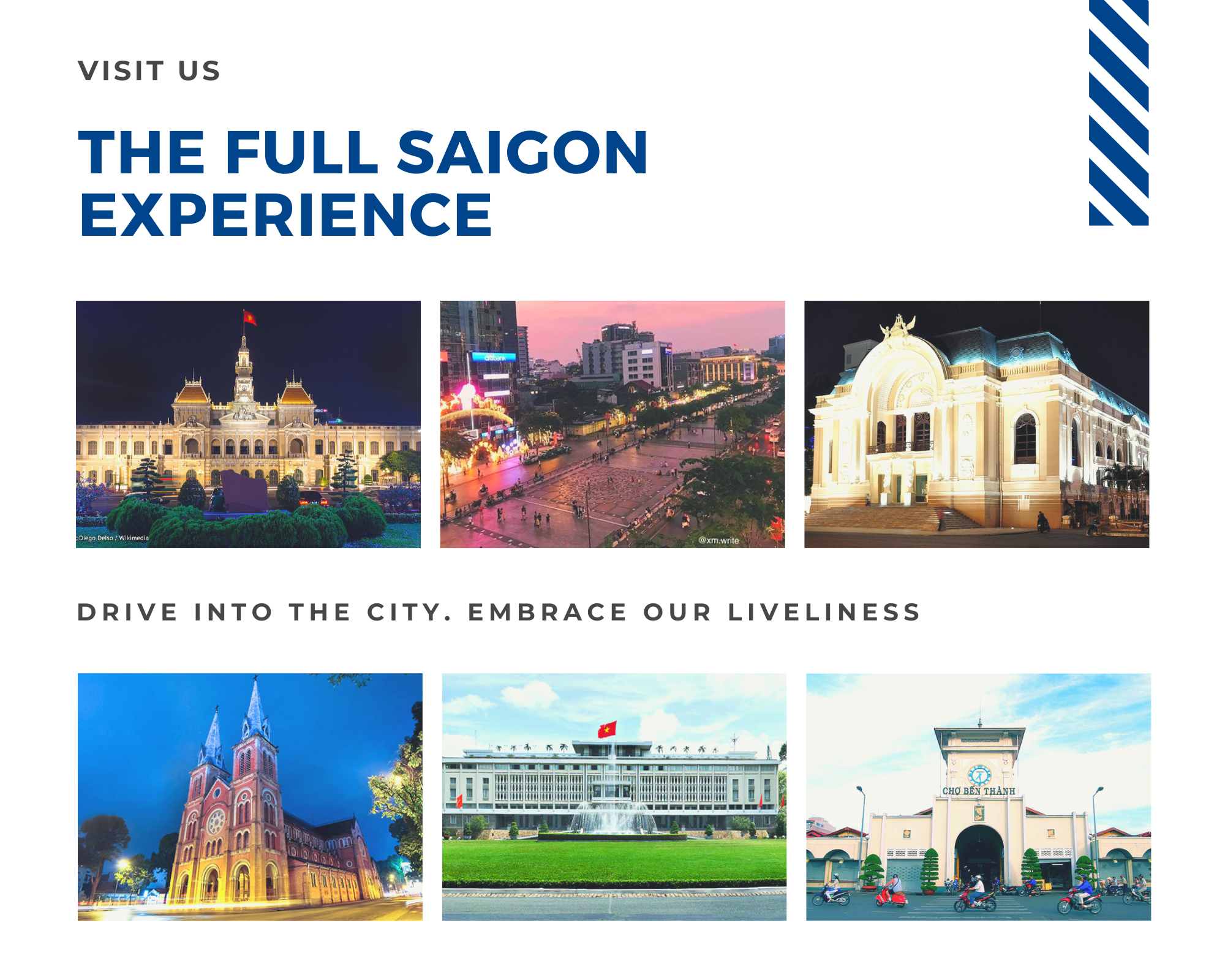Ho Chi Minh City, Economic Hub, The City that Never Sleeps, The Vibrant Vibes, The Most Livable City in Vietnam - you name it, we are it!
Ho Chi Minh City, also known as Saigon, is at its most dizzying: a high-octane city of commerce and culture that has driven the country forward with its pulsating energy. A chaotic whirl, the city breathes life and vitality into all who settle here, and visitors cannot help but be hauled along for the ride.
It is, indeed, a city of unbridled energy and romantic fervour - thriving with culture and commerce that has driven Vietnam towards social and economic development. Fascinating, chaotic and effervescent, this city is sure to take your breath away.

Main Landmarks and Tourist Attractions
It is the most crowded city in the country with an official population of almost 9 million people in a total area of over 2,061 km2. The city now comprises 18 districts, 5 suburban districts, and Thu Duc City, with several main landmarks and tourist attractions:
City Hall
Built in 1909 and known as Hôtel de Ville de Saïgon, the building with its ornate façade and its elegant interior lit with crystal chandeliers, is one of the city's most prominent landmarks and is now the office of Ho Chi Minh City People ‘s Committee.
Municipal Theater (Opera House)
First built in 1899 as a theater for French troupes’ performances, the building then served as the seat of South Vietnamese National Assembly in the late 1950’s. The theater has been renovated in its original architecture and used for Vietnamese variety shows ranging from traditional music, orchestral performances, fashion shows to symphonies and operas.
Notre Dame Cathedral
The Cathedral was built between 1877 and 1880 on the site of the former Citadel‘s arsenal. The façade is made of red brick in the Neo-Romanesque style and is framed by two square belfries 40 meters high. A statue of Virgin Maria with a height of 4.2 meters was erected later. You can see communion celebrated here two times a weekday and four times on Sunday.
General Post Office
Located on the east side of the square in front of the Cathedral, it was built between 1886 and 1891 in European style architecture with a great glass and ironwork dome. A huge mural of the map of Saigon was later added at the beginning of the 20th century.
Ben Thanh Market
Ben Thanh market was completed in 1914 at the intersection of Le Loi, Ham Nghi and Tran Hung Dao Boulevards. All kinds of products and services are available here every day from 06:00 A.M. to 06:00 P.M. Night market is on both sides of the market, busy from 6 pm till very late at night.
Nguyen Hue Walking Street
Nguyen Hue Walking Street is the most beautiful and largest road in Ho Chi Minh City with colorful decorations and a modern water fountain system. Considered the heart of District 1, Nguyen Hue Walking Street runs from the People’s Committee Building of Ho Chi Minh City to the Saigon River. Here, passerbys will often find parades, art festivals, concerts, sports and cultural performances organized on special occasions. Particularly during Tet, various flower exhibitions and displays are decorated according to the year's mascot, highlighting the entire area
Indepedence Palace
Located in downtown Saigon, through arduous history, the building is now known as the Reunification Palace and is now reserved for governmental receptions, international seminars and exhibitions and tourist sites alike.
Accommodation Recommendation
| Accommodation Type | Details | Note |
|---|---|---|
| UEH Hotels |
Location: 232/6 Vo Thi Sau, Ward 7, District 3, HCMC. Facilities: Fully furnished rooms, study areas, Wi-Fi, security. Eligibility: Available for UEH students and exchange program participants. |
How to Apply: Please send request via rdge@ueh.edu.vn |
| Hotels & Short-Term Stays |
For visitors or short-term students:
- Mid-Range & Luxury Options: Sherwood Suites, Bach Suites Sài Gòn, M Village, etc.
- Average Nightly Rate: $20 - $100 per night
|
Prices may vary depending on location and seasonality. |
| Apartments & Homestays |
For those seeking independent living:
- Recommended Areas: District 1, District 3, Binh Thanh, Phu Nhuan
- Types: Studio apartments, serviced apartments, homestays with local families
- Average Cost: $250 - $600 per month
- Rental Platforms: batdongsan.com.vn, nhatot.com, thuecanho123.com, airbnb.com.vn.
|
Prices may vary depending on location and seasonality. |
Tips for Finding Accommodation
- Book early, especially before peak academic seasons.
- Consider transportation—choose a place with easy access to UEH campuses.
- Check contracts carefully when renting apartments.
- Use trusted platforms or get recommendations from UEH staff or students.
